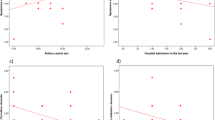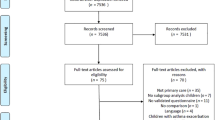Abstract
Background
Health-related quality of life (HR-QOL) is an important outcome in the treatment of chronic childhood diseases such as asthma. However, this measure is rarely used in young children in Asia because of the difficulty of obtaining valid, reliable instruments that are developmentally and culturally suitable.
Objectives
To select, culturally adapt and validate a disease-specific HR-QOL questionnaire (Childhood Asthma Questionnaire [CAQ]-B) for asthmatic children aged 7–11 years in Singapore, and to understand the relationship between patient-reported HR-QOL domains and physician- or caregiver-rated severity.
Methods
A literature review was conducted to shortlist questionnaires based on pre-specified criteria. A pre-test was conducted to assess suitability and relevance of the questionnaires in Singapore. The selected questionnaire (CAQ-B) was then adapted to more closely reflect the local culture, climate, school system and terminology. Cross-sectional validation was conducted.
All asthmatic patients aged 7–11 years attending the respiratory clinic in a paediatric hospital, and without co-morbidities that could significantly affect their HR-QOL, were invited to participate. Patients and their parents or caregivers were asked to complete the relevant sections of the questionnaire before their medical consultation. The child’s severity of asthma was rated by the attending physician according to guidelines from the Singapore Ministry of Health.
Correlations between the child-reported CAQ-B outcomes and clinical ratings of severity by both parents and physicians were investigated. Internal reliability was tested with Cronbach’s alpha, and the overall questionnaire structure was explored using principal axis analysis with oblimin rotation and extraction for factors with Eigen values >1.0.
Results
The adapted CAQ-B was validated in 96 patients (40 girls and 56 boys) with a mean age of 8.7 ± 1.1 years (range 7–11). Most children had no difficulty understanding and completing the questionnaire. The median time taken to complete a questionnaire was 10 minutes.
Internal consistency of the various scales ranged from 0.29 to 0.76 (Cronbach’s alpha) when items were analysed according to the UK or Australian scale structure. This increased to 0.57–0.76 after item reduction. Physician-rated severity only correlated significantly with the Active Quality of Living (AQOL) domain (r = −0.29, p = 0.02). However, parent/caregiver-rated severity correlated with three of four patient-reported domains: AQOL (r = −0.359, p = 0.001), Passive Quality Of Living (PQOL) [r = −0.271, p < 0.01] and severity (r = 0.367, p < 0.001). The AQOL domain was significantly correlated with the PQOL domain (r = 0.513, p = 0.005).
Conclusions
The children and parents/caregivers in this study found CAQ-B to be a simple and acceptable questionnaire with some evidence of content validity. While two of the domains did not meet internal consistency standards expected of HR-QOL instruments for adults (Cronbach’s alpha = 0.70), they were acceptable for children of this age. The patterns of correlation also suggest that parent/caregivers’ perception of the severity of a young child’s asthma may be a better indicator of a child’s HR-QOL than clinical diagnosis of severity. However, further investigation is recommended to improve and validate the internal structure of the scale.








Similar content being viewed by others
References
Testa MA, Simonson DC. Assessment of quality-of-life outcomes. N Engl J Med 1996; 334: 835–840
Nouwen A. EMG biofeedback used to reduce standing levels of paraspinal muscle tension in chronic low back pain. Pain 1983; 17 (4), 353–360
Juniper EF. Health-related quality of life in asthma. Curr Opin Pulm Med 1999; 5: 105–110
Juniper EF, Guyatt GH. Asthma and allergy. In: Spilker B, editor. Quality of life and pharmacoeconomics in clinical trials. 2nd ed. Philadelphia (PA): Lippincott Raven, 1996: 977–982
Juniper EF, Guyatt GH, Ferrie PJ, et al. Measuring quality of life in asthma. Am Rev Respir Dis 1993; 147: 832–838
Marks GB, Dunn SM, Woolcock AJ. An evaluation of an asthma quality of life questionnaire as a measure of change in adults with asthma. J Clin Epidemiol 1993; 46: 1103–1111
Rowe BH, Oxman AD. Performance of an asthma quality of life questionnaire in an outpatient setting. Am Rev Respir Dis 1993; 148: 675–681
Clark CD. In sickness and in play: children coping with chronic illness. The Rutgers Series in Childhood Studies. New Jersey (NJ): Rutgers University Press, 2003: 49–51
Juniper EF, Guyatt GH, Feeny DH, et al. Measuring quality of life in children with asthma. Qual Life Res 1996; 5: 35–46
Erickson SR, Munzenburger PJ, Plante MJ, et al. Influence of sociodemographics on health related quality of life of paediatric patients with asthma and their caregivers. J Asthma 2002; 39 (2): 107–117
Guyatt GH, Jenifer EF, Feeny DH, et al. Children and adult perception of childhood asthma. Pediatrics 1997; 99: 165–168
Connolly MA, Johnson JA. Measuring quality of life in paediatric patients. Pharmacoeconomics 1999; 16 (6): 605–625
Bender BG. Measurement of quality of life in pediatric asthma clinical trials. Ann Allergy Asthma Immunol 1996; 77: 438–447
Census of Population Office, Department of Statistics Singapore. December 2000; Singapore Census of Population, 2000: advance data release no. 3._Literacy and language [online]. Available from URL: http://www.singstat.gov.sg/papers/c2000/adr-literacy.pdf [Accessed 2004 Feb 10]
Clarke E, Sulaiman S, Chew FT, et al. Pediatric asthma quality of life questionnaire: validation in children from Singapore. Asian Pac J Allergy Immunol 1999; 17: 155–161
Goh DYT, Chew Fr, Quek SC, et al. Prevalence of childhood asthma, rhinitis and eczema: a survey in Singapore. Arch Dis Child 1996; 74: 131–135
Chew FT, Lee BW. Utilization of healthcare resources for asthma in Singapore: demographic features and trends. Asian Pac J Allergy Immunol 1998; 16: 57–68
Eiser C, Cotter I, Oades P, et al. Health related quality of life measures for children. Int J Cancer 1999, 90
French DJ, Christie MJ, Sowden AJ. The reproducibility of the Childhood Asthma Questionnaires: measures of quality of life for children aged 4–16 years. Qual Life Res 1994; 3: 215–224
French DJ, Carroll A, Christie MJ. Health related quality of life in Australian children with asthma: lessons for cross cultural use of quality of life instruments. Qual Life Res 1998; 7: 409–419
French DJ, Christie MJ. Manual for the childhood asthma questionnaire. 1995 [online]. Available from URL: http://www.psy.uwa.edu.au/davina/ManualUK.rtf [Accessed 2005 Aug 5]
French DJ. Manual for the childhood asthma questionnaire (Australian version) 1st ed. 1996 [online]. Available from URL: http://www.psy.uwa.edu.au/davina/Manua/Oz.rtf [Accessed 2005 Aug 5]
MOH clinical practice guidelines 1/2002: management of asthma [online]. Available from URL: http://www.gov.sg/moh/pub/cpg/cpg.htm [Accessed 2004 Feb 10]
Norusis MJ. SPSS 11.0 guide to data analysis. New Jersey (NJ): Prentice Hall, 2002
Cane RS, Ranganathan SC, McKenzie SA. What do parents of wheezy children understand by ‘wheeze’? Arch Dis Child 2000; 82: 327–332
Markson S, Fiese BH. Family rituals as a protective factor for children with asthma. J Pediatr Psychol 2000; 25: 471–480
Sawyer MG, Spurrier N, Whaites L, et al. The relationship between asthma severity, family functioning and the health-related quality of life of children with asthma. Qual Life Res 2000; 9 (10): 1105–1115
Fayers PM, Machin D. Quality of life: assessment, analysis and interpretation. Chichester: John Wiley and Sons, 2000
Wee HL, Lee WWR, Ravens-Sieberer U, et al. Validation of the English version of the KINDL® generic children’s health-related quality of life instrument for an Asian population: results from a pilot test. Qual Life Res 2005 May; 14 (4): 1193–1200
Wijnhoven HAH, Kriegsman DMW, Snoek FJ, et al. Gender differences in health related quality of life among asthma patients. J Asthma 2003; 40 (2): 189–199
Wan GJ, Counte M, Cella DF, et al. An analysis of the impact of demographic: clinical and social factors on health-related quality of life. Value Health 1999; 2 (4): 308–318
Chong LY, Neo SB, Tan AL, et al. A comparison of asthma knowledge and medication compliance between general clinic and specialist clinic. Proceedings of the 14th Singapore Pharmacy Congress and 9th Pan Pacific Conference; 2000 Aug 5–9; Singapore
West A. Methodological issues in the assessment of quality of life in childhood asthma: what educational research has to offer. In: Christie M, French D, editors. Assessment of quality of life in childhood asthma. Chur: Harwood Academic Publishers, 1995
Perrin JM, MacLean WE, Perrin EC. Parental perceptions of health status and psychological adjustment of children with asthma. Pediatrics 1989; 83: 26–30
Langton Hewer S, Hobbs J, French D, et al. Pilgrim’s progress: the effect of salmeterol in older children with chronic severe asthma. Respir Med 1995; 89 (6): 435–440
Kaugars AS, Klinnert MD, Bender BG. Family influences on pediatric asthma. J Pediatr Psychol 2004; 29 (7): 475–491
Bender BG, Annett RD, Iklé D, et al. Relationship between disease and psychological adaptation in children in the childhood asthma management program and their families: the CAMP Research Group. Arch Pediatr Adolesc Med 2000; 154: 706–713
Acknowledgements
The authors are very grateful to Dr Davina French for permission to use and adapt the CAQs, and guidance in the adaptation process.
The authors also wish to acknowledge and thank Dr Anne Goh, Dr Jenny Tang, Dr Ho Ling and the pediatric respiratory medicine team for the referral of patients; the nurses and clinic assistants of Specialist Outpatient Clinic J at KK Women’s and Children’s Hospital for their kind assistance; and most importantly, the patients and their families who participated enthusiastically in the project.
All authors participated in the conceptualisation and design of the study. L.-Y. Chong performed the statistical analyses. All authors read and approved the final manuscript.
L.-Y. Chong is a PhD candidate in the Department of Pharmacy, National University of Singapore, and received the National University of Singapore post-graduate research scholarship and grants from the Asthma Association for research projects.
Dr O.-M. Chay is a senior consultant at the Division of Paediatric Medicine, KK Women’s and Children’s Hospital, and is an investigator in several industry-sponsored clinical trials.
Dr L. Shu-Chuen is an associate professor at the Department of Pharmacy, National University of Singapore.
The authors have no conflicts of interest relevant to the contents of this paper.
Author information
Authors and Affiliations
Corresponding author
Rights and permissions
About this article
Cite this article
Chong, LY., Chay, OM. & Shu-Chuen, L. Is the Childhood Asthma Questionnaire a Good Measure of Health-Related Quality of Life of Asthmatic Children in Asia?. Pharmacoeconomics 24, 609–621 (2006). https://doi.org/10.2165/00019053-200624060-00007
Published:
Issue Date:
DOI: https://doi.org/10.2165/00019053-200624060-00007




